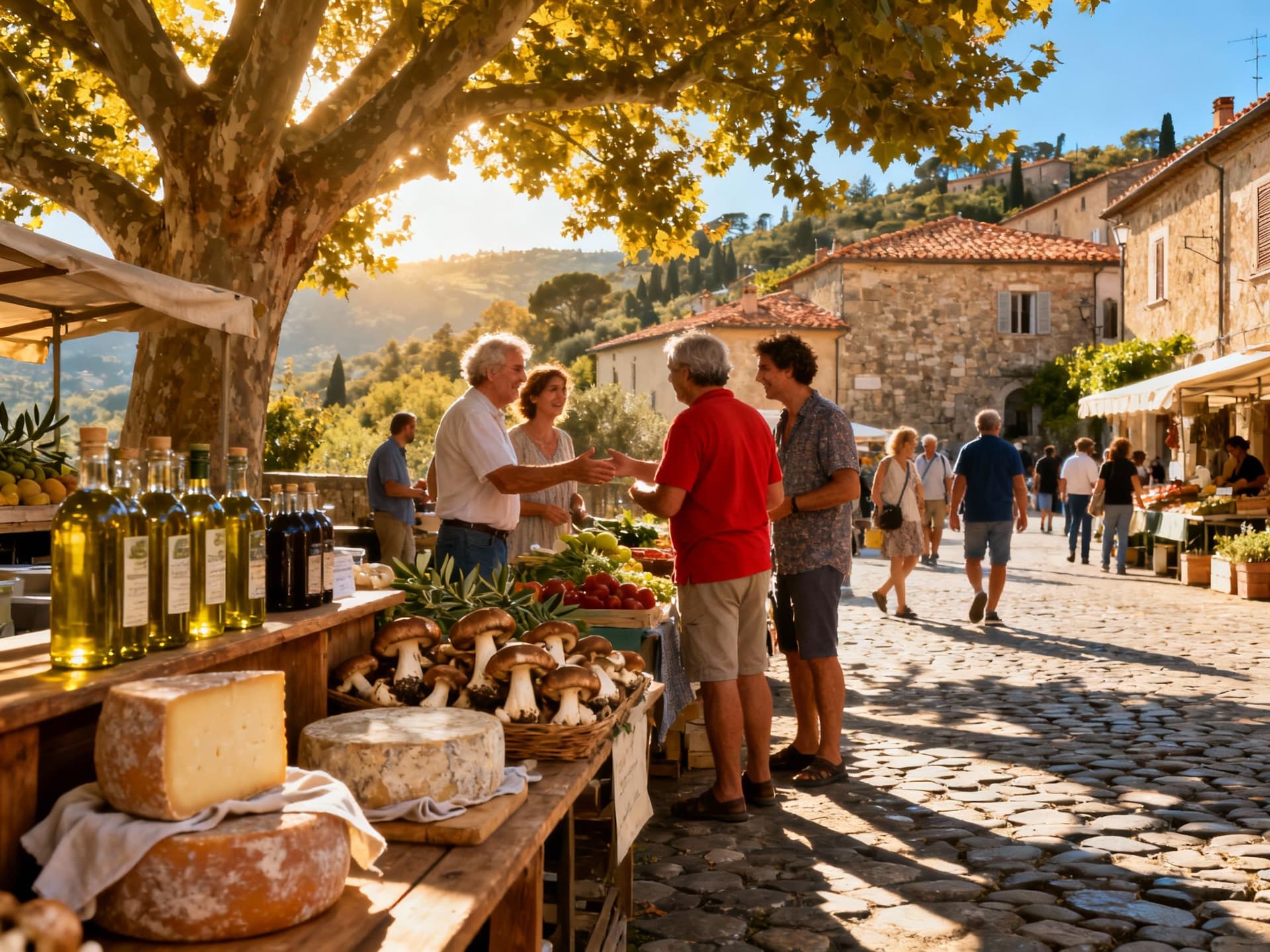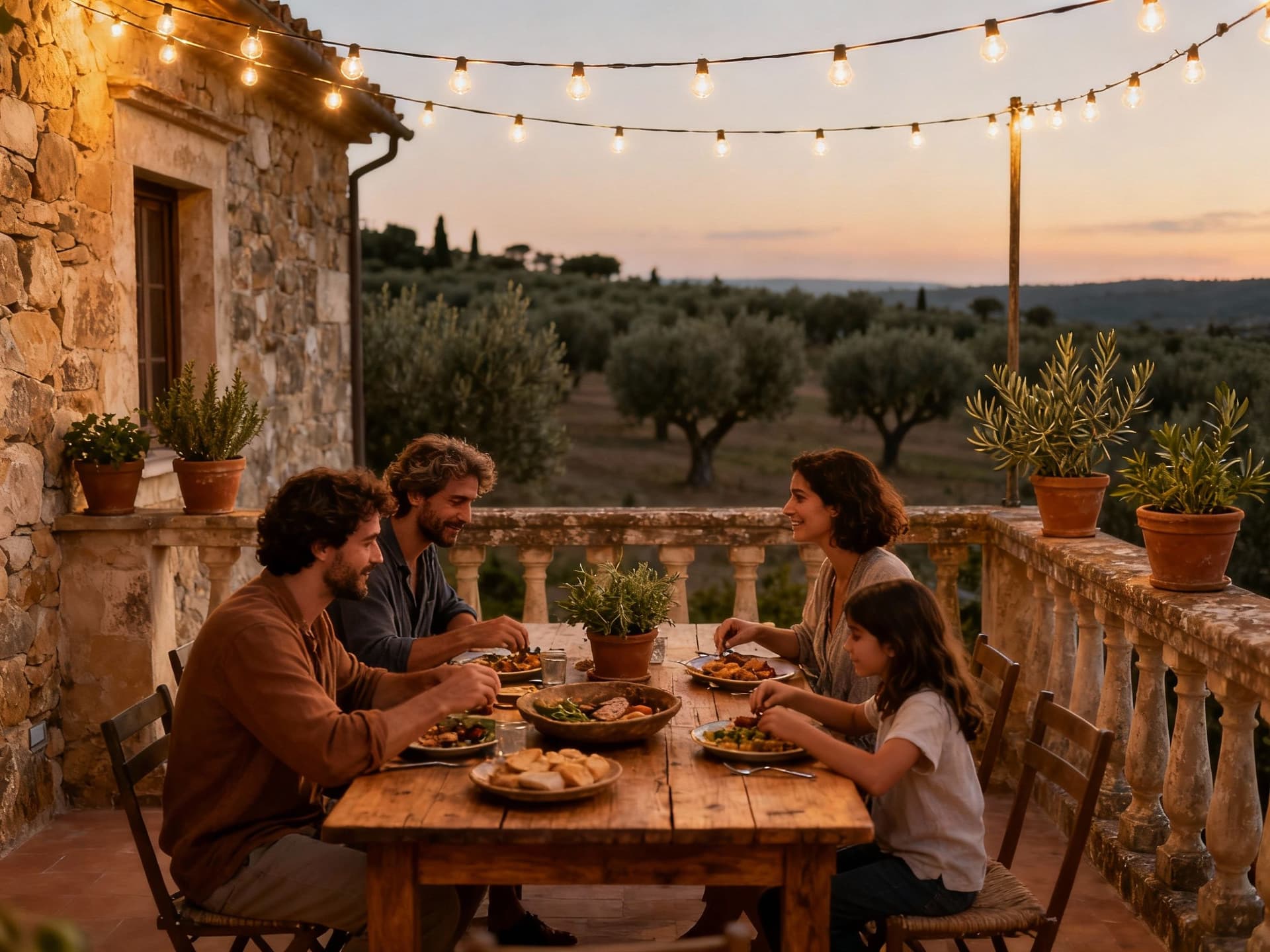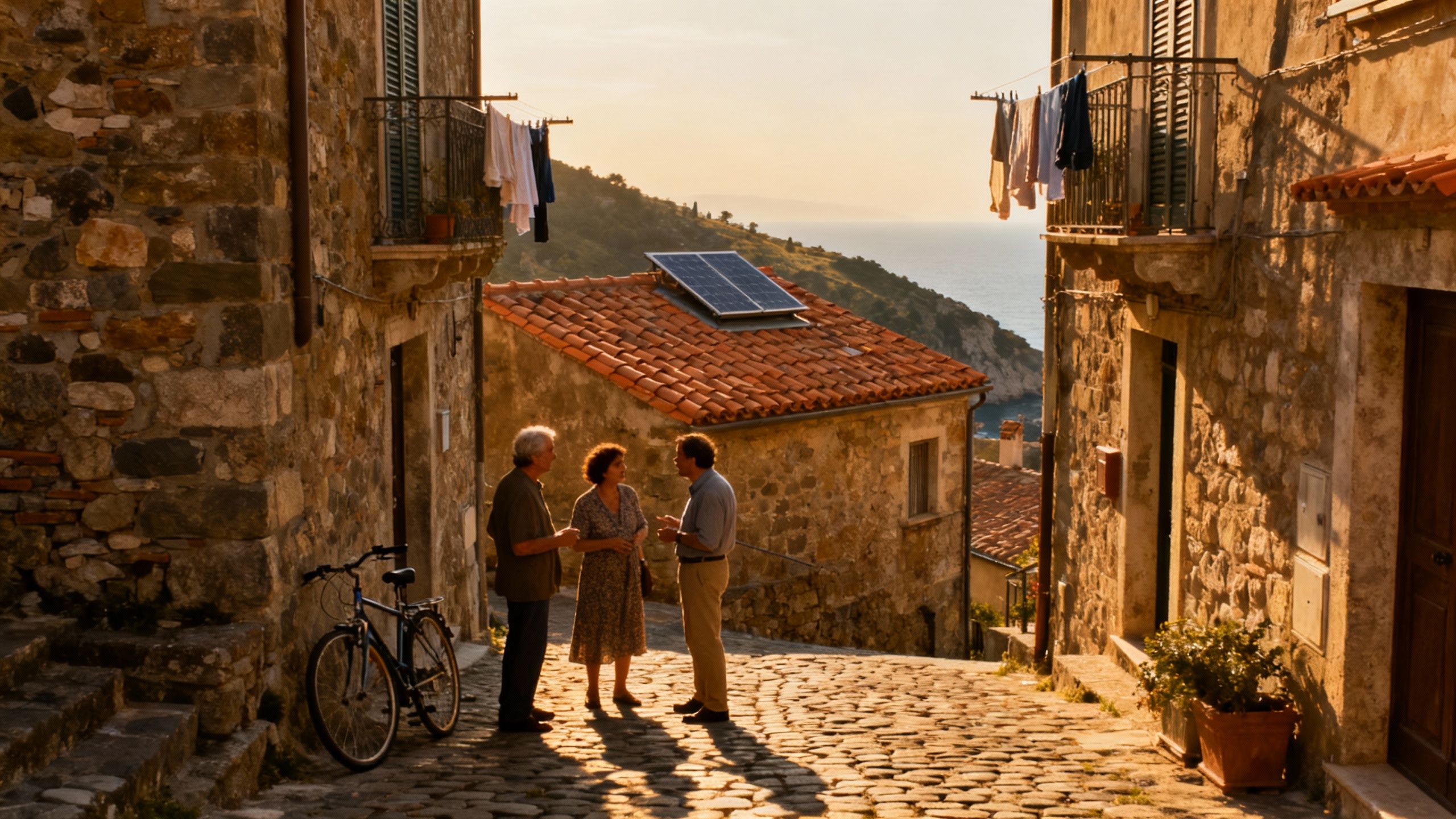Italy’s Verdant Coast & Forests: Lifestyle, Timing, Stewardship
Italy’s green coasts and forested towns are drawing more international buyers; prioritise energy class, seasonal visits and local stewardship to make the dream lasting.
Imagine waking to a market town cappuccino in hand, then walking through an olive grove whose scent drifts into a stone kitchen — and knowing the home you bought there is part of a living landscape. Italy’s green coasts and forested hills reward patient buyers with seasonal rhythms, village markets and houses that age like a well-loved book. But beneath the romance lives a practical truth: timing, local knowledge and an eye for sustainable features shape whether that dream becomes a steady life or an expensive regret. Recent market analysis shows foreign interest and demand for eco‑friendly homes rising across Italy, making now a pivotal moment for international buyers.
Living the Italian Verdant Life

The rhythm here is seasonal and sensory: mornings scented with baking bread in Ligurian alleyways, late afternoons folding into vineyard light in Tuscany, winter fog on Lake Como that hushes the streets. Coastal Liguria, the oak‑studded slopes of Cilento, and the chestnut forests above Umbria each have a distinct tempo — fishermen chatting at the harbour in Sanremo, shepherds in the Marche checking sheep, and chefs in Puglia buying the day’s catch at 7am. Kyero’s 2025 regional data highlights the spread of international searches beyond the classic Tuscan dream into coastal and southern towns, signalling a broader appetite for authentic, nature‑rich living.
Neighborhood spotlight: Liguria’s hidden terraces
In Liguria, think beyond Portofino. Ventimiglia and Sanremo have rocky coves and whispering Mediterranean pines; behind their promenades are terraced olive groves and narrow streets where artisans restore sea‑salted stone houses. A one‑hour drive inland reveals chestnut woods and tiny hamlets where solar panels and dry‑stone walls coexist with centuries‑old architecture. For buyers seeking both rugged coastline and forested tranquility, these transitional slices deliver dramatic light, short walks to sea, and the chance to steward a landscape rather than merely own a view.
Food, markets and the everyday rituals
Picture a Saturday: a farmers’ market in a granite square — porcini sellers at the back, a table of fresh burrata, young olive oil producers offering tastes — then an afternoon walk through a cork oak grove to a quiet cove. Local life in verdant regions centers around food and small producers; many buyers find their social life built around weekly markets, trattorie that use local vegetables, and harvest festivals where neighbours swap bottles of wine. These rituals shape property priorities: a kitchen garden, shaded terraces and easily stored harvests matter as much as the number of bedrooms.
Morning market at Piazza Matteotti, Sanremo — olive oil tastings and fishermen
Hike from Riomaggiore into chestnut groves above the Cinque Terre for afternoon light
Sunday arboricoltura in Puglia — ancient olive groves with modern pruning cooperatives
Truffle fairs in Alba and local markets in Umbria — time your visits around harvests
Making the Move: Practical Considerations

The lifestyle you crave — coastal hikes, market mornings, harvest seasons — must be balanced with market realities. Italy’s 2025 reports note steady price growth and a clear premium for energy‑efficient, renovated homes. That premium means a property workflow that includes ecological due diligence: energy class checks, water management on sloped sites, and a renovation plan that respects local materials and regulations. Treat local agents as cultural translators: they’ll flag village water access, historical restrictions and the small, fixable defects sellers often overlook.
Property styles and what they offer
Stone farmhouses (casali) anchor you to land with thick walls that stay cool in summer; coastal homes trade afternoon breezes for salt‑worn shutters and terraces made for evening meals. Restored historic homes often hide modern systems — heat pumps, insulated roofs, greywater systems — while very cheap rural houses may need heavy‑touch renovation and landscape work to be sustainable. Match building type to lifestyle: if you want gardens and produce, prioritise south‑facing plots with good soil; if low‑maintenance is key, look for renovated A‑class properties that already earn the energy premium.
Working with local experts who know the land
Engage a bilingual, local agent with green renovation experience; they’ll vet energy class (Classe Energetica) and local zoning before you fall in love.
Hire an architect familiar with traditional materials (stone, lime plaster, chestnut beams) to keep a renovation both legal and ecologically coherent.
Ask for a breakdown of running costs and seasonal access — winter road clearance in hill villages or summer water for gardens can change your experience.
Prioritise solar readiness and rainwater capture in coastal and hilly properties to lower long‑term costs and increase resilience.
Insider Knowledge: What Expats Wish They’d Known
Most expats arrive swept up in light and food, but later they talk about small, practical surprises: the cadence of local bureaucracy, seasonal isolation on narrow coastal roads, and the social value of showing up at village events. Data shows international buyers are increasingly present in southern and coastal towns; that shift means services improve, but also that early movers set the tone for stewardship. Smart buyers become part of the village fabric rather than island owners — they learn the rhythm of harvests, neighbourly trades and communal olive‑pressing days.
Cultural integration and daily life
Learn enough Italian to manage household tasks and small negotiations — a few phrases smooth repairs, and a basic familiarity with customs (knocking before visiting, midday riposo respect) opens doors in practical ways. Engage with local producers: an olive‑grower will teach you pruning, and a neighbourhood chef will tell you which figs to save for drying. These small acts create a softer, more resilient life than any rental yield or glossy listing.
Long‑term lifestyle and stewardship
Think in seasons and generations. A home bought with landscape care in mind — native plantings, erosion control on slopes, solar and greywater systems — changes with you and increases in both use‑value and market value. Stewardship also means asking whether your presence supports local ecosystems and trades; the best purchases are those that enhance biodiversity, revive a workshop, or sustain a field of olives rather than displace it.
Conclusion: If Italy calls you for its light, food and forests, answer with both heart and homework. Let seasonal life shape your timeline — visit during harvest or off‑season to see how places breathe across months — and bring a team that understands place‑based renovation, ecological resilience and local customs. When you buy this way, your home becomes a living promise: a kitchen full of market produce, a terrace that captures evening light, and a neighbourhood that knows your name. Start by asking an agent about energy class, solar readiness and local water arrangements — small questions that protect the dream.
Danish relocation specialist who moved from Copenhagen to the Algarve; supports families with seamless transitions, local partnerships, and mindful purchases.


